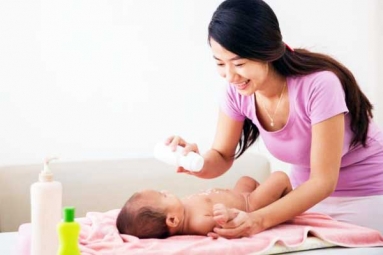
(Image source from: Canva.com)
Although India has overtaken China to become the world's most populous nation, it is undeniable that the infertility rate in India has been on the rise. Over the years, this rate has shown a continual increase, climbing from 22.4% during the period of 1992–93 to 25.3% in 2005–06, and then further to 30.7% in 2015–16. While the country contends with this challenge, another pressing issue is emerging—secondary infertility. This condition arises when couples face difficulties in conceiving a second child following a successful first pregnancy. Surprisingly, the incidence of secondary infertility in India is increasing, with studies indicating that its prevalence reached approximately 28.6% in 2015-16, reflecting a rise of 5.9%. In contrast to primary infertility, in which couples have never achieved pregnancy, secondary infertility is characterized by hurdles encountered during attempts to conceive after having previously succeeded. Various contributors such as age-related decline in fertility, reproductive health concerns, and lifestyle choices can lead to this situation.
A major factor driving this trend is undoubtedly the postponement of childbirth coupled with evolving lifestyle habits. As our society changes, priorities have shifted, with career advancements, financial security, and personal aspirations taking center stage. While this shift is not inherently problematic, it has led numerous couples to opt for delayed pregnancies, often without considering the potential consequences. Consequently, while conceiving for the first time may be straightforward, achieving a second pregnancy can pose significant challenges. Certain age demographics are particularly susceptible to secondary infertility. For women over 35, the likelihood of fertility diminishes due to the age-related decrease in both the quality and quantity of eggs. Likewise, men over 40 face increased risks, as lifestyle factors such as drinking, smoking, drug use, and chronic health issues can adversely affect fertility. Attempting a second pregnancy after this age raises the likelihood of unsuccessful conception.
In addition, the pressures of everyday life contribute to stress, which can adversely affect fertility, alongside hormonal disorders such as Polycystic Ovarian Syndrome (PCOS) or endometriosis. Numerous comorbidities, including hypertension, diabetes, thyroid dysfunctions, metabolic syndromes, weight variations, chronic medication usage (both legal and illegal), blocked fallopian tubes, compromised sperm motility or count, and varicocele, further exacerbate the prevalence of secondary infertility. A prior infection stemming from a past abortion, vaginal delivery, or local infection may result in tubal factor infertility due to blockages in the fallopian tubes. Another potential issue is endometritis, an infection of the endometrium, which may also contribute to infertility challenges.
As time progresses, the number and quality of eggs in women decrease, making it increasingly challenging to conceive. This issue affects both genders, as healthy sperm is essential for a viable pregnancy, and its quality also begins to diminish after a certain age. With more couples opting to start families later in life, they may face a reduction in both the number and quality of their eggs over the years. Furthermore, individuals in this age range may be prone to lifestyle-related health issues or pre-existing medical conditions that can influence their fertility. Even couples who are younger may encounter difficulties due to high levels of stress. Therefore, being proactive about recognizing and identifying secondary infertility is vital.
Secondary infertility is less commonly discussed, as many mistakenly assume that having previously conceived guarantees future pregnancies. This misunderstanding exists partly because societal attention often centers on primary infertility, leading to a gap in knowledge and dialogue surrounding secondary infertility. Consequently, the topic remains largely unspoken, and many remain unaware of it. A previous pregnancy, regardless of the outcome, does not guarantee success in conceiving later. If a couple has been attempting to conceive for at least a year and has regular sexual relations without success, seeking medical evaluation is advisable.
The treatment options available vary based on the underlying cause of the infertility. For instance, if there are issues with ovulation, methods to stimulate ovulation will be considered. In cases where the fallopian tubes are the problem, procedures like hysteroscopy or laparoscopy can be employed for diagnosis and treatment. If a mucous fibroid is identified, it can be surgically excised. In the presence of endometriosis, appropriate management is crucial. Since the treatment is tailored to individual causes, if semen analysis indicates issues related to the male partner, we will investigate factors such as varicose veins or motility problems and take necessary steps to address them. Preventing unnecessary abortions and unwanted intrauterine procedures can help mitigate the risk of infertility, so it is best to avoid these interventions as much as possible. Additionally, adhering to fundamental health guidelines, such as maintaining a nutritious diet, engaging in regular exercise, and reducing alcohol intake, can enhance the likelihood of successful conception and carrying a pregnancy to term.







